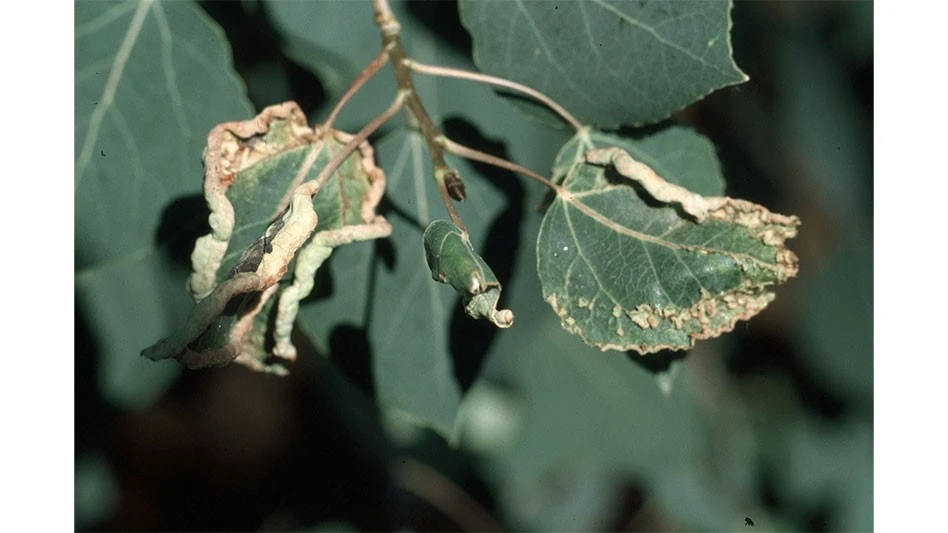
Whitney Cranshaw, Colorado State University, Bugwood.org

Mites are not insects, but tiny animals related to spiders. There are several different species of mites that can cause damage to a wide variety of ornamental plants, including deciduous trees and shrubs, evergreens, and garden plants.
The two most significant cool-season mites in nurseries are the spruce spider mite and southern red mite. Their hosts are evergreen plants, so damage remains on plants for years. Thus, scouting for mites before damage is critical. Warm-season spider mites are among the most damaging and difficult-to-control pests of deciduous trees, shrubs, and herbaceous plants. Southern red mites, Oligonychus ilicis, are pests of broad-leafed evergreens in the Southeast and California. There are many other spider mite species that may be present in your nursery. Many of these, like the boxwood spider mite, infest a single plant species so the troubles you encounter depend on the crops you grow. However, by scouting and responding early you can stay ahead of the game and reduce mite damage.
The facts about Mites
Identification: As the name implies, mites are so small that they often cannot be seen without the aid of a magnifying glass, which makes identification difficult. Often the first sign of a problem is extremely fine webbing produced by certain species of mites. More commonly, an infested leaf or needle will begin to lose its normal green color, followed by a flecked or stippled pattern. To verify the presence of mites, place a piece of white paper beneath an infested branch and gently shake the foliage. Mites will fall and appear as slow-moving specks on the paper.
Life cycle: Although mites can appear any time during the growing season, most mite populations will increase quickly during hot, dry weather. Their development from egg to adult usually takes less than a week, and most mite species produce several generations each season. This combination of rapid growth and multiple generations makes them difficult to control.
Damage: Mites feed by using their needle-like mouthparts to pierce the chlorophyll-bearing cells of a plant leaf and suck out the plant juices. This repeated feeding action will produce a flecking, bleaching, or stippling pattern on the affected foliage. When significant populations are present, these injured areas can enlarge, turn yellow or brown, dry, and then drop from the plant. Infested deciduous leaves can become deformed or curl downward.

Bugwood.org
Biological control: Spider mites are prey for many generalist predators such as predatory mites, lady beetles, predatory thrips, green lacewing larvae and minute pirate bugs. These predators are already present in nurseries and, if protected from certain insecticides, could maintain low spider mite populations. Predators can be purchased from commercial insectaries and released into mite-prone crops. Consult your biological control supplier for details on the efficacy of this in your nursery.
Chemical control: Although they seem similar, insects and mites have important physiological differences. Thus, you should use insecticides for insects and miticides for mites. Many miticides are now available to help manage these stubborn pests. Insecticidal soaps and horticultural oils can also provide control especially if infestations are noticed early.

Explore the May 2022 Issue
Check out more from this issue and find your next story to read.
Latest from Nursery Management
- John Ruter shares UGA's latest woody and herbaceous ornamental plant breeding projects
- Conor Foy joins EHR's national sales team
- Pantone announces its 2026 Color of the Year
- Syngenta granted federal registration for Trefinti nematicide/fungicide in ornamental market
- Get to know Kayela Aeppli
- HILA 2025 video highlights: John Gaydos of Proven Winners
- Q&A with Justin Bartlett
- Be the best choice





